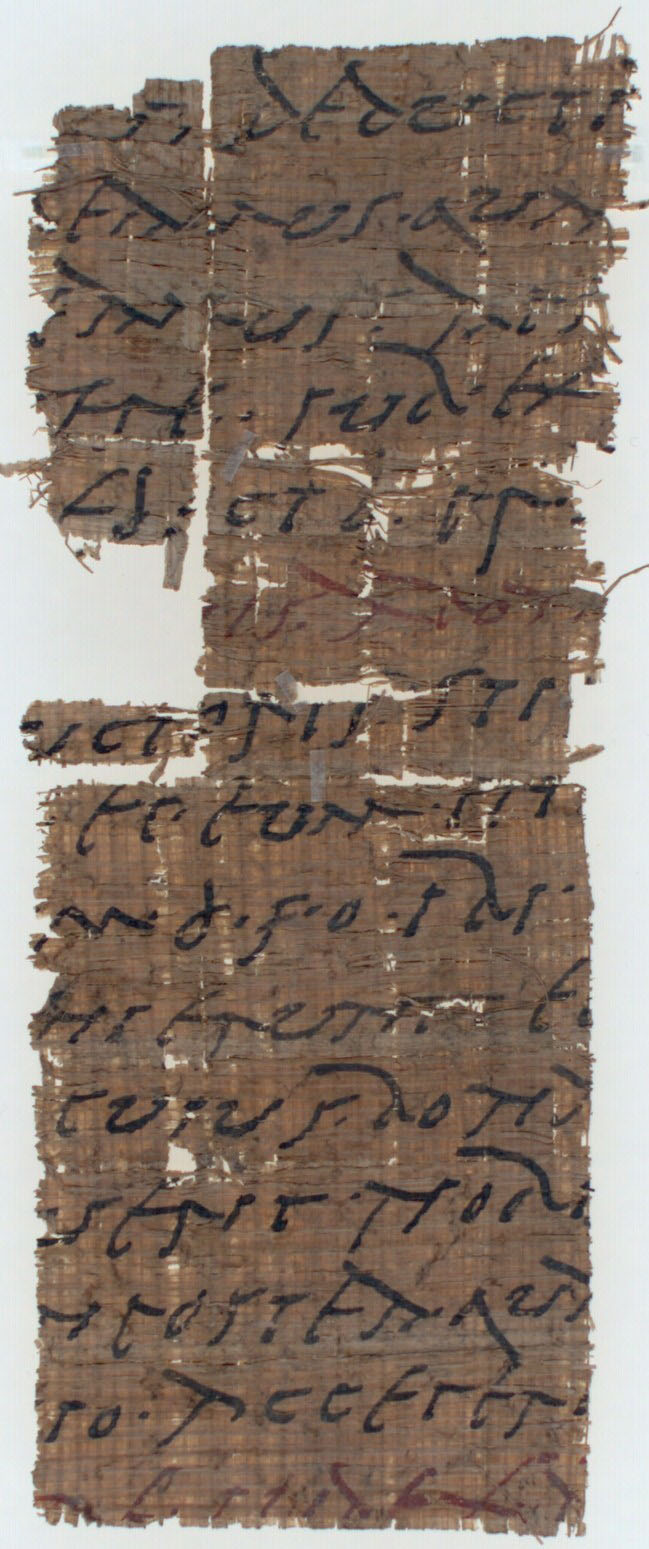
Ann Arbor, Michigan University, Library P. 5604b recto (P. Mich. VII 456)
The aim of Redhis is a new appreciation of Roman legal culture in Late Antiquity. The project focuses on the elements which display the persistence of an high-level legal culture. Two are the main aspects that will be researched. First, a comprehensive understanding of legal culture has to include the study of the legal texts’ manuscript transmission. Although in Late Antiquity few works were composed anew, the books of the main classical jurists of previous centuries were copied, read and studied in the school and cited in the courts. A full appreciation of the remains of such copies in papyri and parchment – which has been neglected here so far – will explain how the lawyers of the 4th and 5th centuries AD kept in touch with the achievements of previous jurists. Secondly, Late Antiquity is considered to be the epoch of the emperors’ legislation, in opposition to the previous epoch dominated by private jurists. Nevertheless, an analysis of the motivations of the emperors’ decisions will show the mental proceeding of the lawgivers and, at the same time, will show a deep relationship with the works of the roman jurists. The project will be developed, under the direction of the Principal Investigator, by three research teams, with a strong cross-disciplinary composition. A wide collection of papyri and parchments will be edited, as a basis for a new interpretation, which will be the second part of the project.

Berlin, Ägyptisches Museum und Papyrussammlung, P.Berol. inv. 6757 verso
The research project Redhis “Rediscovering the hidden structure. A new appreciation of Juristic texts and Patterns of thought in Late Antiquity” has begun its five year activity on February 1st, 2014. It is a project selected and funded as ERC Advanced Grant 2013. Principal Investigator is professor Dario Mantovani, Senior Staff professor Luigi Pellecchi. Host Institution: University of Pavia, Italy.
Redhis, con il suo richiamo alla “riscoperta della struttura nascosta”, mira a mettere in rilievo la persistenza nella Tarda Antichità del pensiero giurisprudenziale classico, lungo due assi di ricerca. In un’epoca che produsse poche opere giuridiche nuove, la capillare sopravvivenza del pensiero giurisprudenziale è attestata in primo luogo dalla copia e uso delle opere dei giuristi classici: dunque, la circolazione dei manoscritti dev’essere studiata come testimonianza di cultura giuridica. La completa valorizzazione - attraverso il censimento, l’edizione e valutazione - delle opere dei giuristi classici su papiro e pergamena potrà mostrare come i giuristi del IV e V secolo d.C. si mantennero in rapporto intellettuale e pratico con le acquisizioni del pensiero giurisprudenziale dei secoli precedenti. In secondo luogo, la Tarda Antichità è considerata l’epoca della legislazione imperiale, in opposizione all’epoca precedente dominata dai giuristi privati. In realtà, l’analisi delle motivazioni delle costituzioni imperiali mostra una stretta, persistente relazione fra la mentalità dei legislatori e le forme di pensiero dei giuristi classici. Il progetto viene svolto, sotto la direzione del Principal Investigator, da tre gruppi di ricerca, con una composizione pluri-disciplinare. Sarà edita una collezione di papiri e pergamene, come base per una nuova valutazione della cultura giuridica tardoantica, che costituisce la seconda parte del progetto
Redhis “Rediscovering the hidden structure. A new appreciation of Juristic texts and Patterns of thought in Late Antiquity” è un progetto quinquennale (dal 1 febbraio 2014) finanziato come Advanced Grant dall’European Research Council, nell’ambito del programma “Ideas”. Principal Investigator è il professor Dario Mantovani, Senior Staff il professor Luigi Pellecchi. Host Institution è l’Università di Pavia, Italia.


